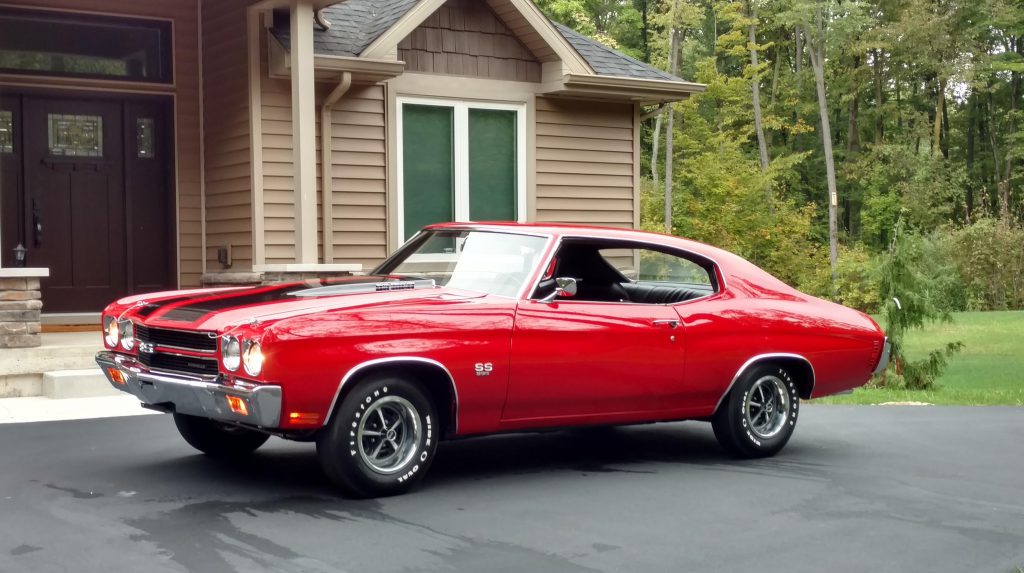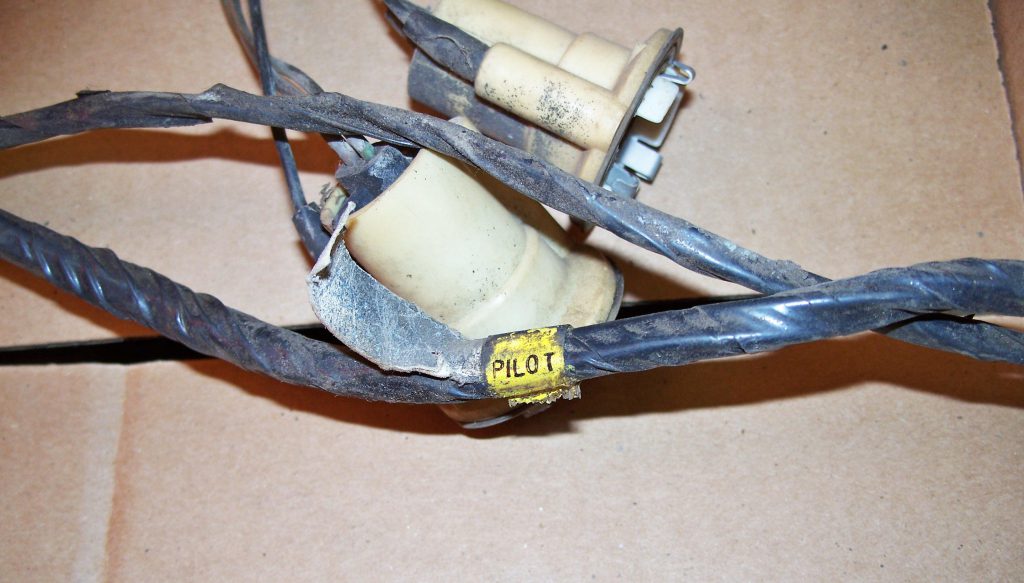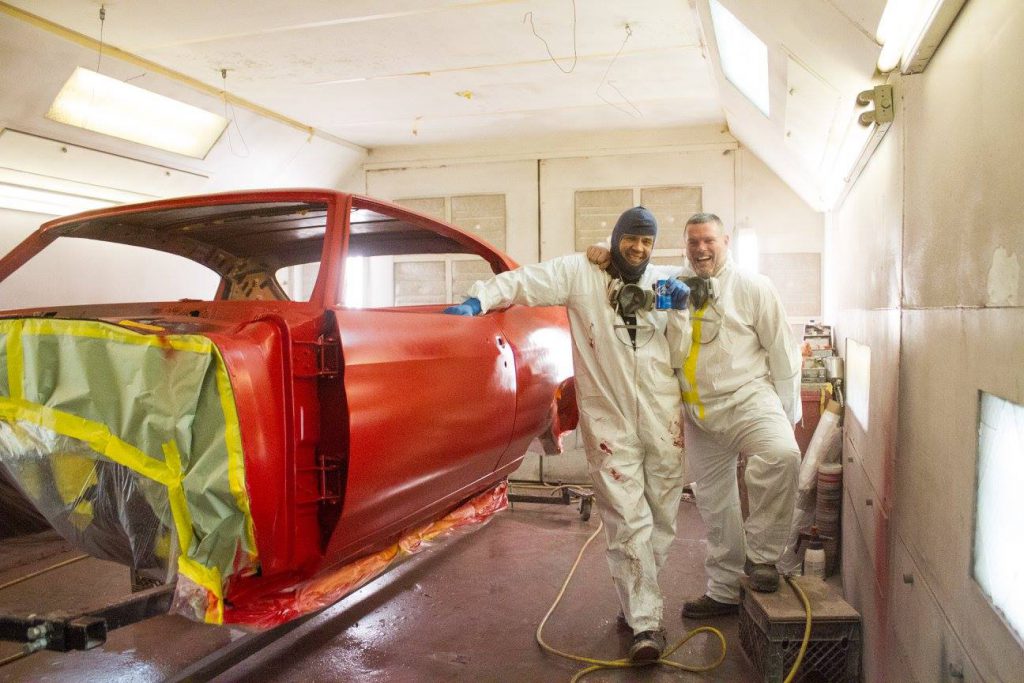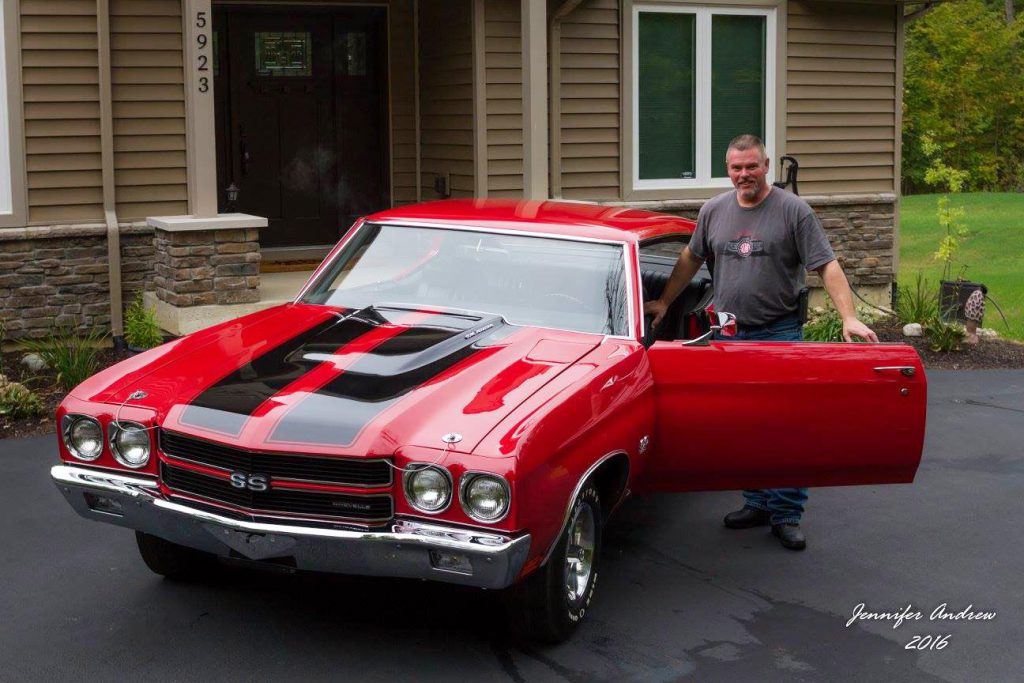Back in November at the most recent SEMA Show, we learned something new about Chevelles. It was at the Show that our staff discovered Dave Harter’s ’70 Chevelle SS and learned of its’ history as a General Motors Pilot Car, built for pre-production testing, product development and promotional purposes, and never intended to be sold to the public. Apparently all Pilot Cars were supposed to be crushed when their testing and development lives were over. Pilot Cars were hand-built, non-numbers-matching vehicles and none would have normal build sheets because they were assembled outside of the actual production line.
Although GM built pre-production Pilot Cars across a variety of models and platforms, very few escaped the jaws of the crusher. Records indicate that while there were 49 Pilot Chevelles built for the 1970 model year, perhaps only a dozen made it out of the factory and into the hands of private owners. Of those dozen, it is thought that Dave Harter’s car might be the only restored, registered and rolling 1970 Pilot Chevelle SS still on the road today. How Dave acquired the car and how it came to be restored as-new today is an interesting tale, and one worth sharing.
Dave told us he first spotted his car several years ago in an Auto & RV photo ad magazine published in the Indiana, Ohio, and Michigan area. The ad listed the car as a “1970 Chevelle SS with low VIN number” and said it was located in New Hudson, Michigan. When Dave and his cousin Tony McAfee went to view the car in person, they found a Chevelle that was mostly intact but had been “picked over pretty good” and many parts were missing. The seller stated that he had started to rebuild the car, but abandoned the project due to poor health. Although the cousins could not find a build sheet in the car, they did take note of the unusually low VIN number (136370F100042), and after negotiating a price, Dave brought it home.
Working at home, Dave began disassembly of the car while keeping an eye out for a build sheet. No build sheet was ever found, but Dave did notice that there were mysterious ID Labels in the interior panels that said “PILOT” or “ADVANCED BUILD”. Next Dave found yellow “PILOT” labels on the trunk (wiring) harness, dome light harness, the fuse block and the firewall. There were also “PILOT” labels on the back side of dash instrument cluster and in the engine bay. By this time Dave realized he had an unusual Chevelle and began researching the codes on the trim tag.
The trim tag codes revealed the car was built in the 3rd week of May (05C) in 1969. It was built with a black vinyl bench seat and the paint code (75 75) indicated Cranberry Red from top to bottom. After contacting the GM Heritage Center for more info, Dave learned that he had something very special. His 1970 Chevelle SS was a rare Pilot Car and this fact dictated a new approach to how he would restore it. As a Pilot Car, Dave decided to retain as much of the original metal as he could and replace only what he had to. Upon embarking on a complete rotisserie restoration, Dave found that just about every part he removed had a hand written part number on it. The numbers were found throughout the interior, under the hood and even the bright work and window regulators had numbers hand written on them.
Examining the powertrain, Dave found a 396 CE block, with 4 bolt mains, dated Aug 5 1969. However, the block was incomplete with only the crank, rods and pistons still inside. With more research Dave learned the tach redline indicated the car was an L34 396, not the L78 version, and that the “CE” block was originally a warrantee block or “counter exchange” component. After locating the correct replacement heads, intake, water pump, carb and distributor (all date correct), Dave enlisted his cousin Tony to rebuild the motor in correct L34 configuration. A rebuilt, code correct TH400 transmission was installed as well.
Dave next enlisted the help of Rick Nelson, owner of Muscle Car Restoration and Design in Pleasant Plains, Illinois to restore the dash, wiring harness and steering column back to factory specs. The dash was a bit unusual as it contained a non-working seat belt light that had no wiring harness to power it. Dave (and GM) speculate that since dash-mounted seat belt lights were first introduced in late 1971, and mandated by the DOT for 1972 builds, the 1970 Pilot Chevelle’s non-functional seat belt light was probably installed for testing purposes only, and not put into actual use.
Although Dave did as much paint and bodywork as he could, he employed Doug Call at T&D Motorsports in Fort Wayne, Indiana to complete the job. Using a small piece of metal that still had factory color on it, T&D used Automotive Art Paints to “match the paint 99% to the original color.” The original frame was restored with new body mount bushings and bolts. The original suspension and brake system were restored. The original bright work was polished and reinstalled and all of the original glass was restored (with exception of the driver’s door glass).
Dave also restored the interior using as many original parts as possible. The original seats were recovered, and the original rear panels and arm rests were retained. New door panels, carpet, padding and head liner were necessary, and new window cranks and door handles were required as well. The original seat belts dated 1969 were replaced to bring the car up to current DOT safety standards. The SS-style 14×7 wheels are not original to the car, but they are coded and date correct for 1969.
Upon completion of the restoration, Dave set out to find out where his car was originally from and although a few clues led to Ver Hoven Chevrolet in Detroit, Pilot Cars were never supposed to be sold at dealerships at all. Ver Hoven Chevrolet closed back in 1982, and no further information was available as records were not retained when the dealership closed. Dave Harter is understandably proud of his rare Pilot Chevelle, and says “Being able to get this car back to its original glory and show it at SEMA 2016 was a great experience, and this restoration would not have been possible at all without the help of so many talented and skilled people.”
As found in New Hudson, Michigan…mostly intact but “picked over pretty good” and many parts missing.
The first clue to the rarity of this Chevelle was the ultra-low VIN number.
This Shipping Stub reveals the fact that this was an original Pilot Car.
The “Pilot” designation was evident in many different places inside the car.
Researching the Trim Tag confirmed this car was one of a very few 1970 Chevelle SS Pilot Cars.
The frame and suspension were rebuilt prior to installing a period-correct drivetrain.
The original block was an L34 396 CE with 4 bolt mains, dated Aug 5 1969. The “CE” designation indicates this was originally a warrantee block or “counter exchange” component.
The rebuilt 396 received a rebuilt, code correct TH400 transmission behind it.
Owner Dave Harter (without headgear) enlisted Doug Call at T&D Motorsports in Fort Wayne, Indiana to handle the paint and body work on the Pilot Chevelle.
Dave Harter and his rare 1970 Chevelle SS Pilot Car. (Photo by Jennifer Andrew)













